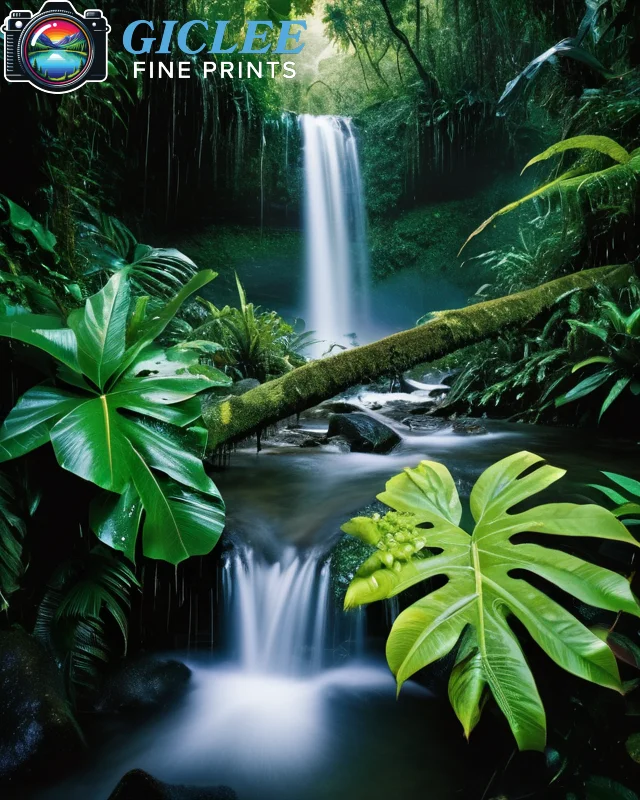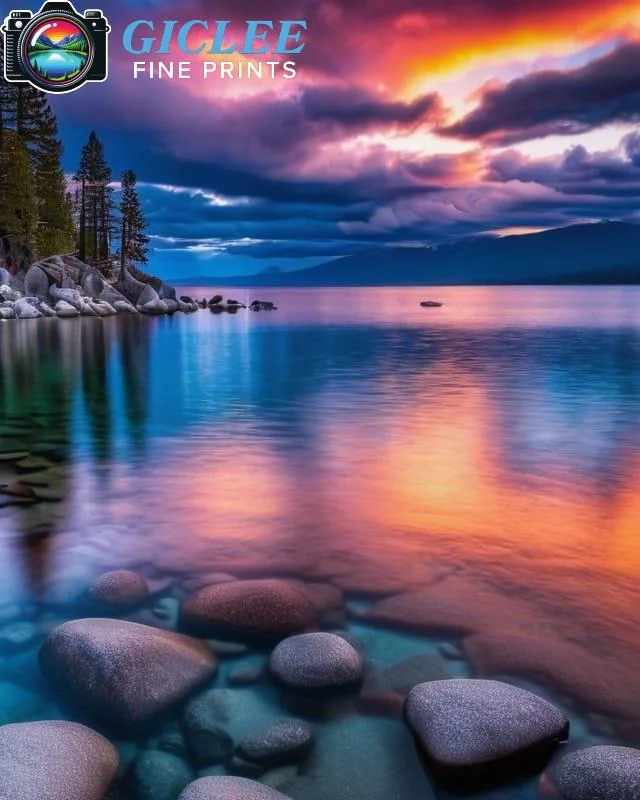
Matting your prints can elevate their presentation, protect them from damage, and add a professional touch to any artwork or photograph. When done well, matting enhances the print’s aesthetic by creating a clean border that draws the viewer’s eye to the image. At Giclee Fine Prints, we focus on best practices for matting that ensure your prints are beautifully displayed and well-preserved.
Select the Right Matting Material
Choosing high-quality matting materials is essential for the longevity and appearance of your prints. Opting for acid-free or archival-quality mats prevents the artwork from yellowing and ensures it remains in top condition.
Key Tips:
- Acid-Free Matting: Acidic materials can cause discoloration over time. Always use acid-free or archival mats to protect your print from yellowing or damage.
- Mat Board Thickness: Standard mats are usually 4-ply, but thicker, 8-ply mats offer a more substantial, dimensional look. Thicker mats are particularly effective for larger prints.
- Color Choice: Neutral colors like white, cream, or light gray complement most prints without distracting from the artwork. For specific color schemes, colored mats can enhance the print, but avoid overly bold colors that may clash.
Best For:
- Long-term preservation of prints and professional presentations where quality materials enhance the overall appearance.
Determine the Mat Border Size
The width of the mat border can dramatically affect the presentation of your print. A well-proportioned border frames the artwork, adding depth and focus to the image without overwhelming it.
Key Tips:
- Standard Border Width: A general rule of thumb is to use a mat border width that is 1.5 to 3 inches. For larger prints, wider borders (3-4 inches) help to create balance.
- Bottom-Weighted Borders: Consider making the bottom border slightly wider than the top and sides for a visually balanced look. This is a common technique in galleries and adds a sense of stability to the artwork.
- Custom Sizes for Small Prints: For small prints, avoid overpowering them with thick borders. A smaller, proportional mat border works best for compact pieces.
Best For:
- Various display settings, from small frames on desktops to large wall-mounted prints, to ensure visual harmony in each display.
Choose Between Single or Double Matting
Deciding on single or double matting depends on the style you want to achieve and the depth you wish to add. Double mats add an extra layer of color and sophistication, creating a more pronounced framing effect.
Key Tips:
- Single Mat: A single mat is straightforward and works well for minimalist presentations, emphasizing the artwork itself.
- Double Mat: Adding a second mat layer, usually in a contrasting color, creates depth and enhances the artwork’s visual impact. Ensure the top mat color is neutral while the bottom mat can subtly match a color in the print.
- Spacing: For double mats, leave a ¼-inch reveal between the top and bottom mats. This is enough to add dimension without overpowering the image.
Best For:
- High-end presentations and detailed artwork, where layering complements the complexity and richness of the print.

Secure the Print with Archival Hinging Tape
How you mount your print to the mat board affects its appearance and preservation. Archival hinging tape is a safe and professional way to secure the print without risking damage.
Key Tips:
- Use Archival Hinging Tape: Acid-free hinging tape prevents yellowing or damage to the print. Avoid using standard tape, as it can degrade over time and harm the print.
- T-Hinge Method: The T-hinge is a common and effective way to attach prints. It secures the print to the mat board while allowing for slight expansion and contraction with temperature changes.
- Avoid Over-Taping: Only tape the top of the print to allow natural movement and prevent buckling or wrinkling within the frame.
Best For:
- Long-lasting display setups where archival materials ensure the artwork remains intact and undamaged over time.
Choose Appropriate Mat Colors to Enhance Your Print
Mat color selection is critical, as it can either enhance or detract from the artwork. Generally, neutral colors are safest, but certain prints may benefit from subtle color accents.
Key Tips:
- Neutral Tones: White, off-white, and light gray mats are versatile and work with nearly any print, providing a clean, professional appearance.
- Complementary Colors: For color photography or art prints, consider a slightly tinted mat that complements a color within the artwork. This adds cohesiveness without drawing attention away from the print.
- Avoid Bold Colors: Bold or dark mats can overpower the image and may distract from the artwork. If you’re using a colored mat, choose a subtle shade that enhances rather than competes.
Best For:
- Versatile matting styles that suit different prints and complement gallery settings or home decor.
Protect with a Backing Board
Using a backing board adds stability and protection to your matted print. It also prevents dust, moisture, and other contaminants from damaging the artwork over time.
Key Tips:
- Acid-Free Backing: Just like with matting, use an acid-free or archival-quality backing board to prevent damage to the print.
- Secure with Archival Tape: Attach the mat to the backing board using archival tape along the edges to keep the print in place and provide a sturdy structure.
- Avoid Cardboard: Standard cardboard can release acids over time, which may cause your print to discolor or degrade.
Best For:
- Ensuring durability and protection, particularly for valuable prints that may be on display for extended periods.

Consider Glass or Acrylic Glazing with UV Protection
The right glazing can enhance the print’s longevity, protecting it from UV rays, dust, and other environmental factors. Both glass and acrylic glazing options are available in UV-protective and anti-reflective options.
Key Tips:
- UV-Protective Glazing: UV protection is essential for preserving color and preventing fading over time, especially for prints displayed in rooms with natural light.
- Anti-Reflective Options: Non-reflective or museum-quality glass reduces glare, providing a clearer view of the artwork. This is particularly useful for artwork displayed under direct lighting.
- Acrylic for Larger Prints: Acrylic is lighter and shatter-resistant, making it an excellent choice for large or frequently moved prints. Opt for museum-grade acrylic for the highest quality.
Best For:
- High-traffic areas and well-lit rooms where prints may be exposed to light or require added durability.
Inspect and Clean Mats Regularly
Matting can attract dust and grime over time, particularly if the print is displayed in a frame without glass. Regular inspection and gentle cleaning can keep the mat looking fresh.
Key Tips:
- Dust with a Soft Brush: Use a soft brush to gently remove dust and particles from the mat, avoiding direct contact with the print.
- Use a Microfiber Cloth for Glass: For framed prints, clean the glass with a microfiber cloth and avoid harsh chemicals that may damage the mat or artwork.
- Inspect for Signs of Acid Damage: If you notice yellowing or discoloration around the mat edges, it may be time to replace the mat with a higher-quality, acid-free option.
Best For:
- Maintaining the appearance and longevity of framed prints and matted artwork in home or gallery settings.
Contact Us
Our address is: 3816 Pioneer Trail Ste #3, South Lake Tahoe, CA 96150
Email: Info@gicleefineprints.com
FAQs
Matting enhances the visual presentation of a print, adds depth, and protects the artwork by creating space between the print and the glass, reducing the risk of damage.
Neutral colors like white or off-white are versatile and professional. If you prefer color, choose a subtle hue that complements an element within the print to enhance the image without distracting from it.
Single matting provides a clean, minimalist look, while double matting adds depth and visual interest by using two layers. Double mats work well for highlighting details or adding sophistication.


